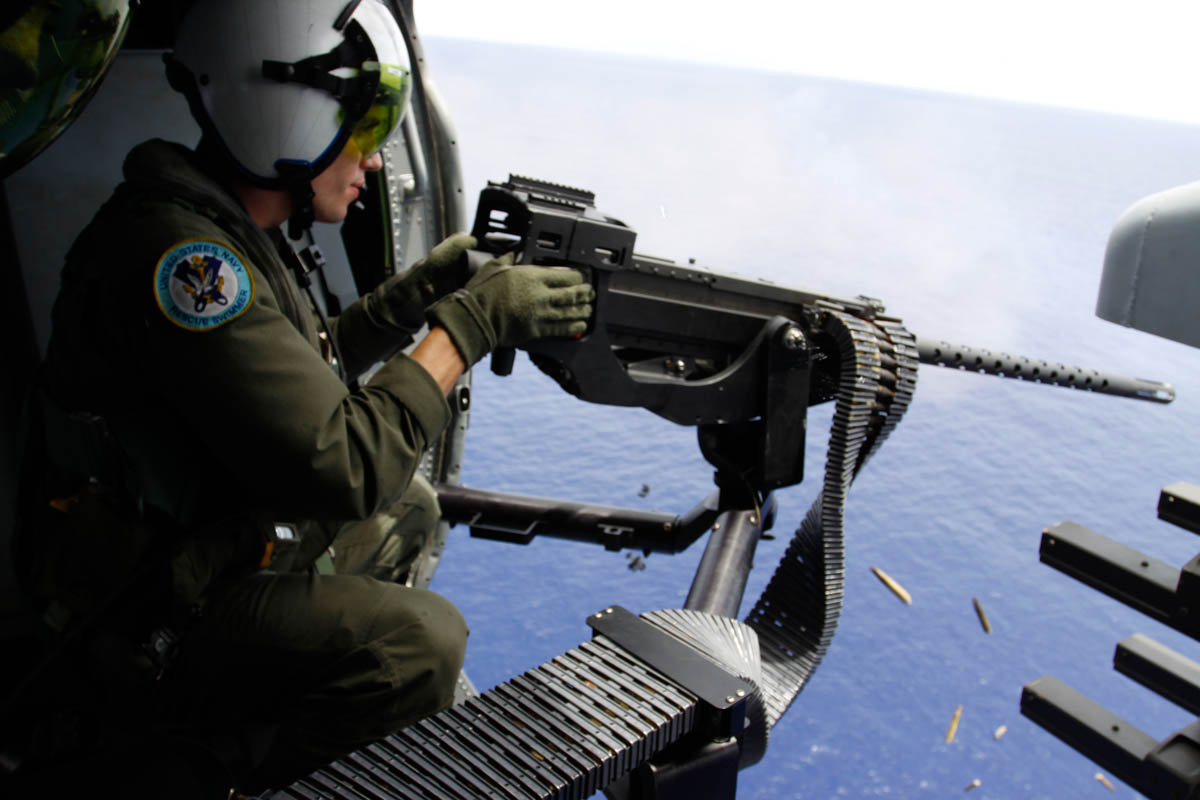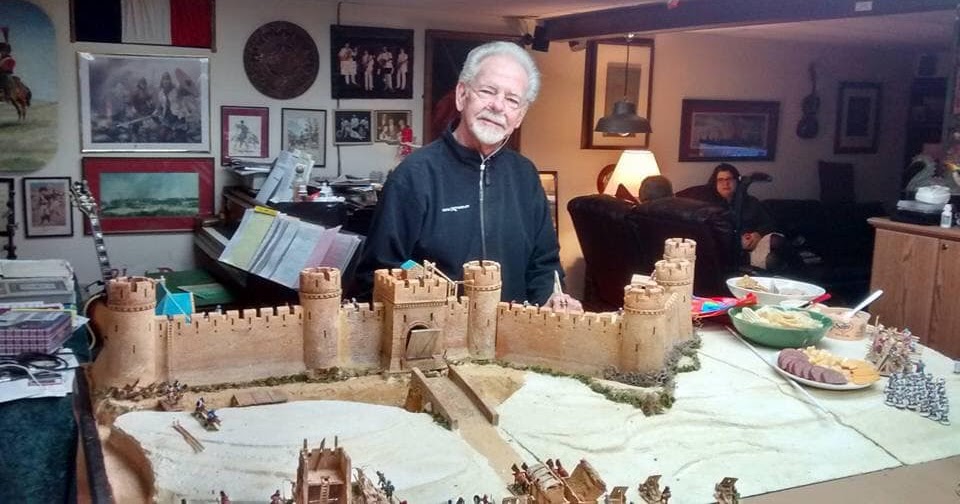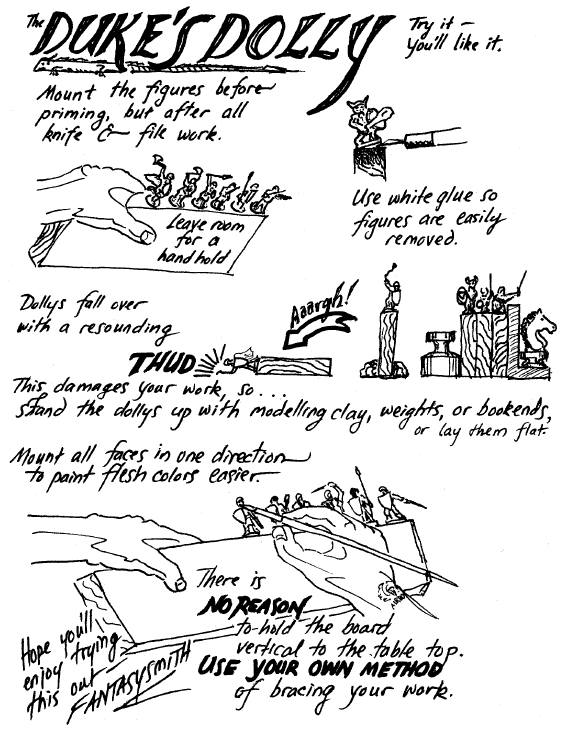
Amid the sweaty smoke of Schwartz
Physical Education Center, a deep, staccato
sound boomed over the chaotic hubbub.

This was not the sound of a Browning heavy
machine gun or the battle commands of a
Balrog, but the message of a prophet—
“Duke” Seifried of Heritage Models. His
message was simple: “Start painting your
figures better and faster using a different
method.”
His claim: Anyone (yes, even you) can
paint 25mm figure in 2-5 minutes without
sacrificing detail or definition. All you have to
do is BELIEVE. This article describes the
Duke’s method, but BELIEVING will be up
to you.

Before you read Duke’s message, take a
look at one of the most extraordinary individuals
in the hobby—the Duke himself.
There is a certain type of fellow whom one
calls “boy” until he reaches such an advanced
age that this moniker becomes horribly
inappropriate—then you call him
“uncle.” Duke Seifried has reached the latter
stage and refers to himself as “Uncle Duke.”
“Tell ‘em Uncle Duke sent ya,” the portable
loudspeaker thunders.
Seifried is a one-man hive of activity.
He’s a show by himself—promoting, painting,
pestering all at once in his best sideshow
barker style: “Hurry, Hurry, Hurry. . . . in
5 minutes the most exciting new adventure
gaming developments will be demonstrated
right before your very eyes.” Despite
the flim-flam-man approach, Duke knows
that he’s the ringmaster as well as the main
event.
In the big tent, Duke carries on painting
demonstrations, adventure gaming, and
standard 15mm miniature battles. At the
concession stands, he sells complete
Heritage store outfits while he eats lunch.
Then, still energetic, he rushes to the real
sideshow to flail away at the maddeningly
inefficient drones that Heritage hires to sit on
chairs in its retail booth. Duke’s energy helps
his firm. His painting techniques can help
you.
The Claim in Perspective
Finished figures in 5 minutes may
seem unbelievable to you, but Duke can
prove it. He’ll take a crisp 20-dollar bill
from anyone unwise enough to disagree with
him and back the dispute with money. To
understand the impact of Duke’s claim, let’s
compare his five minutes with some standard
painting times, using a few relatively honest
examples.
Joe Miceli, a dean of the fantasy painting
professionals, is proud to exhibit 25mm
figures that have as much detail as 54mm
pieces. He says it takes “a week” of spare
time to paint a warrior prince atop a dancing
destrier. This comes to close to five hours,
according to Joe’s reckoning. Whether that
estimate is close on the near side or the far
side, Joe has not said. (Fantasy painters are
like EPA gas mileage ratings when they talk
about painting time—you have to watch
them.)
Tim Kask of The Dragon once painted
300 or so figures in a year. He estimates 40
minutes on the average for a 25mm foot-
slogger from the Napoleonic era. Tim should
be sure—he printed the time in this magazine.
(That’s 200 hours of painting a year,
mathematicians.)
Your own humble Fantasysmith
thrashes around for about 6 hours to paint a
Centaur king which is slightly less than
perfect.
These indicated times are for figures requiring
special loving care, and they imprison
a painter in a time bind that limits
production to only a few pieces per month at
maximum output. Such an investment of
time is beyond the endurance of most
fantasy miniature painters, “turning off”
many who refuse to put up with the dragging
hours.
The same anxious boredom was experienced
in Europe when miniaturists wanted
to have large numbers of figures for big
dioramas or for wargame armies. They developed
“quick” painting methods for turning
out painted figures. Quick painting concentrated
on getting color onto the miniature
figures fast, without too much worry about
fine detail. The method proved to be perfect
for the second line of a wargame army, or for
the diorama figures furthest from the observer’s
eye.
Over the years, the quick method of
painting miniatures was improved, and
better methods of adding definition and
detail were introduced. Even the castings
were modified to allow the miniaturist to
paint them quicker and more accurately. The
Duke's method is a summation of earlier
methods and “tricks,” combined with a few
new ideas derived from new painters.
With Duke’s method, most fantasy players
can aspire to several character pieces as
well as a host of henchmen and hirelings.
Any ambitious Dungeon Master can now
expect to have all the orcs and kobolds he
wants, as well as a series of dragons, a platoon
of drow, several disgusting trolls, a
squad of giants, and a spectre or two supported
by mummies and skeletons. Vast fantasy
armies are no longer out of the question.
Figure painting is removed from the realm of
the expert and democratized so that every
man (and every dwarf) can have a personal
treasure chest of finished figures—or, if
you’re a fantasy field marshal, a personal
army.
What's in Those 5 Minutes
Before you start rumbling in disbelief,
you should understand how the Duke’s
stopwatch was calibrated for pacing the time
and motion study of himself. Fully finished
miniatures require four steps—Prepare (includes
Priming), Paint, and Preserve. Duke
counts only the painting time. Whatever time
he spends on preparing the figures with knife
and file is ignored, along with the time for
priming and final preservation with gloss and
clear coating.
Figures are mounted for mass painting
before the clock starts, too. Here Duke has
hit upon a method for mounting that would
gladden the heart of any flinty-eyed industrial
engineer. Take an ordinary ½”
board that’s about 4” wide. Cut it into 10”
lengths, and use ordinary white glue to
attach half a dozen similar figures along the
edge at about ½” intervals. You are now
assured of having the minimum space required
for your brush to move from figure to
figure. Duke calls this mount a “painting
dolly.” YOU can call it anything you like, but
having several figures in close proximity is
crucial for holding down the time required to
paint each figure. (See accompanying illustrations
for details.)
With six prepared and whitened figures
ready to go, you will soon see why it’s important
to have similar figures on each dolly.
There is to be no switching from one character
type to another, and no jump from
dwarf to giant in mid-brushstroke. Variation
could force decisions, and they always take
time. The only thing you have to decide is
what color to paint the surcoat or shield, and
this decision can also be taken care of before
painting by setting out colors you want to
use.
Paints, brushes, pallet, wipe rags, and
prepared figures must be marshalled before
the clock starts. This is good practice anyway,
and is crucial to time trials. You may not
need to actually change anything you’re
doing now to pull off this little trick, but conscious
preparation is good for your times. It’s
sort of a mental warmup for the fun to follow.
A reasonable set-up is illustrated in this
article. The Duke convinced me that set-up
was important without even mentioning it.
He did this by simple demonstration.
Duke’s method is excellently printed out
in a pink brochure (PINK, Duke?) that he
gladhands out to gawking onlookers and
potential converts. The Duke has said it’s
O.K. if I liberally quote from his masterwork.
You, however, may want the true WORD.
Send to Heritage for it—tell ‘em “Uncle
Fantasysmith” sent you (har, har, har). Include
a self-addressed, stamped envelope
and possibly some trinkets to pay the
starving mercenaries. More explicit and
dulcet instructions may be forthcoming.
Heritage advertisements right here in The
Dragon may soon tell you what else lies
in
store for those who use Heritage paints.
All that follows in parentheses is my
commentary, the rest is pure Duke:
Drawings have been added to aid visualization.
(Heritage paints were conceived and
produced to offer the painter:)
1) A white, water-based primer that
would etch into metal and have no strong
fumes.
2) A selection of colors which would
offer the exact shades I wanted . . . arranged
in family groups so that shading and highlighting
would be a snap. The paint had to
dry quickly. . .
3) Protective coating that would not
only guard against paint being rubbed,
flaked, or chipped off, but would also produce
realistic finishes.
4) Easy cleanup . . . just plain water
would thin the paint and clean brushes and
hands.
Stain Painting Technique
In the past, all painting had to be done
with very careful, time-consuming hand
detail. . . now you can get the same detailed
effects in a fraction of the time. The
real
secret to stain painting is that it is selfshading.
Rather than using full-strength
paint, mix equal parts of paint and water.
The thinned paint is “stained” into the white
primer. The stain flows in a capillary action
and tends to collect naturally in the folds and
depths of the figure. The higher relief on the
figure is only lightly stained. The effect is a
self-shaded figure! . . . Only minor additional
coloring is now required to finish off the
figure.
Wash Techniques
Washing is very similar to staining,
except the ratio is 1 part paint to 3
parts water. This very thin wash is applied to
areas previously stained where it acts as a
tinting agent to deepen details you want to
enhance. For best results, use a darker version
of the basic stain color.
Detailing Concepts
Straps, belts, pouches and so on may be
dubbed in with only minimal care, as the
dimensioning technique (to come) will cover
all the edges and sharpen detail. For detailing
use either full-strength paint or very slightly
thinned paint.
Skin and Facial Features
All flesh tones are based on a base coat of
our “Ruddy Flesh,” which is applied full strength.
After this basic coat of flesh color is
dry, various washes are applied to bring out
the facial detail. (Painting facial features and
flesh tones in general will be covered more
fully in a future article.) <link>
Dimensioning Technique
This is a final wash of Black or Gunstock
Brown applied above and below belts,
straps, pouches, etc. as well as between any
abrupt color changes on the figure—for
example,
where a dark green coat overlaps
white trousers. It is used not only to “pop
out” fine detail but also to cover all raw edges
and to define every part of the figure.
Drybrushing
Use full-strength paint which is the lightest
member of the color family . . . wipe
most
of the paint out of your brush. Now, very
lightly drag the brush over the figure. A little
of the lightly colored paint will cling to the
high points of the figure and all the high relief
detail. You’ll see the figure “come to life”
instantly. . .
Protect
Now you’ll want to protect your figure
using either Matte or Gloss Protective
Coatings.
(Thus endeth the reading from Duke
Seifried.)

After going over the words above, I feel
the BELIEF was created from actually watching
Duke paint up his figures. The words
themselves, though worthwhile instructions,
do not convey the excitement and certainty
that viewing the master conveyed. His performance
is really inspiring, and he’s done it
many times before awestruck audiences.
Trouble is, this merchant of fantasy has not
yet learned what the teachings of wizard
Marshal McLuhan can teach him. By videotaping
his well-prepared show on cassettes,
the Duke could cover the world with inspiration.
The magic of the media could change
Duke from a Conjurer to a 15th-
level Illusionist. Since he’s on our
side, the hobby and all its adherents would
benefit from this transformation.
If you still do not now BELIEVE, the
Duke has graciously lent me several of his
painted figures. (Me thanks to thee, m’Lord).
When questioned thoroughly with the aid of
my henchman’s thumbscrews, the Duke
finally admitted that these took more than
five minutes. “About ten. . .” he gasped,
“And now will you please let me GO?”
Duke’s figures are supplemented in the
photographs by the work of two others who
use Heritage paints and methods similar to
Duke’s.
Even at “about ten” minutes, the time is
cheap, and Duke’s method is certainly worth
trying. At ten minutes per figure, you can
knock out five or six an hour.
Adding preparation, priming, and preservation
time that is twice your painting
time, and allowing for a ten-minute break
each hour, you can finish 15 to 18 figures in
just 3 evenings of three hours each. THAT’S
REVOLUTIONARY!*
But you must first BELIEVE!
*This article is merely descriptive and is
not a recommendation of Heritage paints by
either the author or THE DRAGON.
PAINTERS FEATURED IN THIS
ARTICLE (Those marked * contributed
finished miniatures):
*Duke Seifried
President, Marketing Manager
Heritage Models, Inc.
9840 Monroe Drive, Bldg 106
Dallas TX 75220
A regular at hobby conventions, Duke
may be coming to your area’s major hobby
shop soon. He will put on demonstrations for
those who stock Heritage products.
Timothy Kask
TSR Periodicals
P.O. Box 110
Lake Geneva WI 53147
Tim is one of the most generous painters
around. He’s been known to gives his finished
miniatures away as presents. Greater love has no man . . . .
Joseph Miceli
1825 Bay Ridge Ave.
Brooklyn NY 11204
A dean of miniature painters. Joe’s work
requires far more time than Duke’s quick
method but produces marvels. Joe’s painting
could easily serve as a high standard against
which other miniature painting is measured,
but cannot be used as a model for most
hobbyists. Look for his work at Courier or
Dragontooth booths at conventions.
*Mike Barbero
c/o Stan Johannson
4249 East 177th St.
Bronx NY 10465
Mike produces finished pieces done in
good painterly fashion. DMs
can get a quick cast of characters from him.
His work is said to win prizes.
*John & Connie Nesl
2119 Woodbine Avenue
Knoxville TN 37917
This husband-and-wife team specializes
in fantasy miniature painting. John can paint
mass armies well. Connie likes to put in the
extra detail required to produce character
figures. May they paint happily ever after!